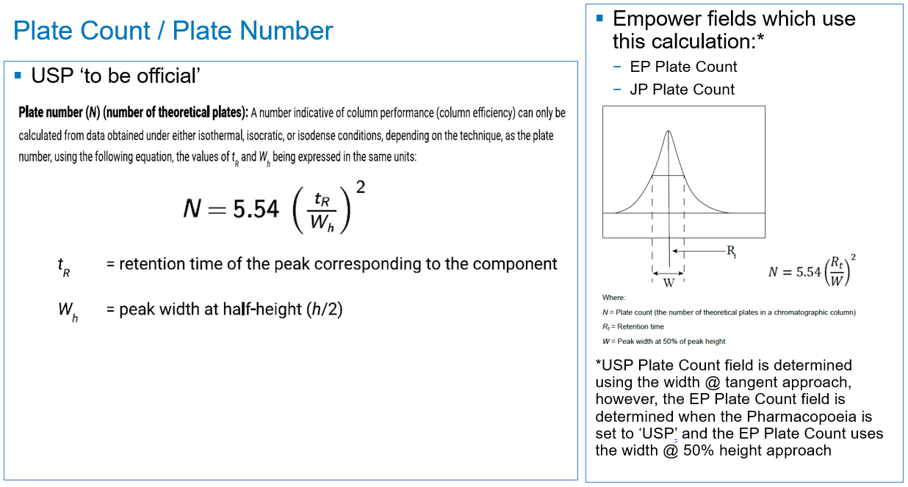Empower Tip of the Week topics covered in 2022: Summary - Tip312
OBJECTIVE or GOAL
List some of the Tip of the Week series topics covered in 2022 and revisit an important tip reviewing the changes in USP Chapter 621 as they relate to Empower.
ENVIRONMENT
- Empower
- Tip of the Week #312
PROCEDURE
A few of the series topics covered in 2022:
- UV Spectra
- Gradient Polymer Elution Chromatography
- Calculating Amounts and Concentrations
- Exception Focused Review
- Baseline Noise/Peak-to-Peak Noise
- USP Chapter 621 for Chromatography
- Peak Ratios and Peak Identification
Now let’s review an important tip discussing the changes to the USP chapter <621> as they relate to Empower:
STEP 1
USP Resolution is now called Resolution and is calculated using peak width at half height. Using current versions of Empower you can report USP Resolution (HH) or a Custom Field (Figure 1).

Relative Resolution should also be calculated using peak width at half height. If you select USP in the Processing Method with current versions of Empower, it does use the peak width at half height for this calculation (Figure 2).

STEP 2
USP Plate Count is now called Plate Number and is calculated using peak width at half height. Using current versions of Empower, you can report EP Plate Count or a Custom Field (Figure 3).

STEP 3
USP Tailing is now called Symmetry Factor and there is no change to the calculation (Figure 4).

STEP 4
The formula for USP Signal-to-Noise ratio does not change, but the half-height multiplier is now 20. You can change the multiplier from 5 to 20 in current versions of Empower in the Processing Method (Figures 2 and 5).


ADDITIONAL INFORMATION
This can be done with either the Pro or QuickStart interface.

